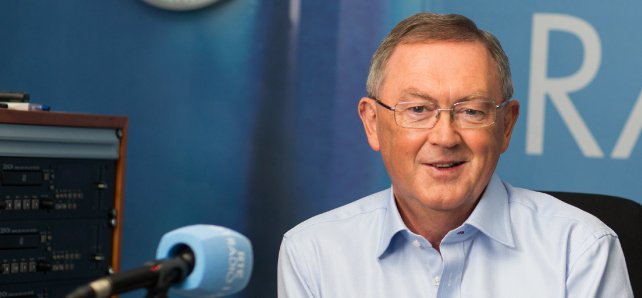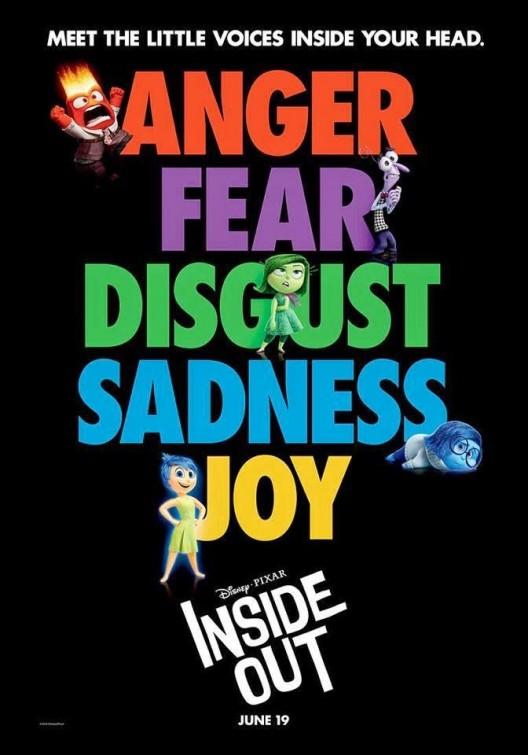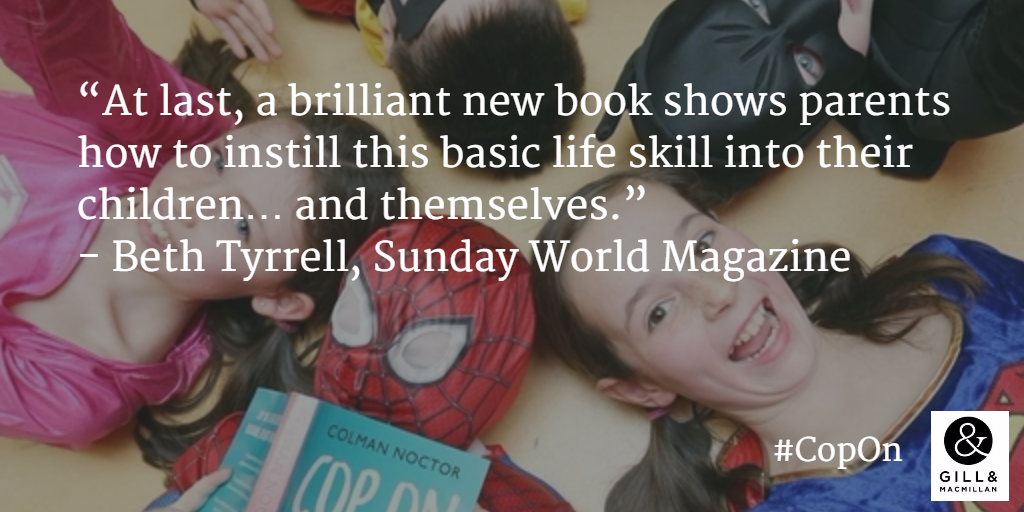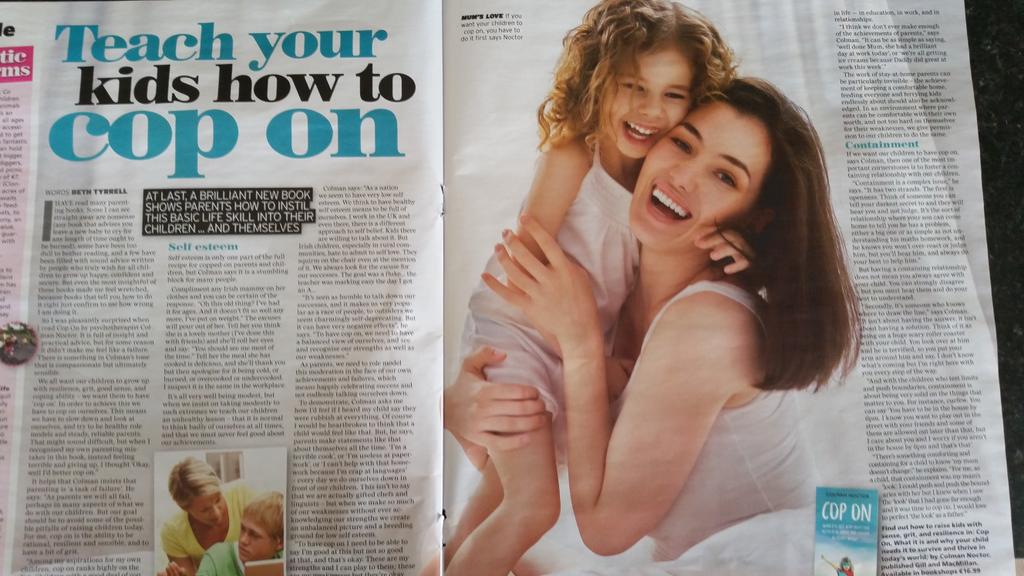Parenting: “My 1 year-old is afraid of having a bath”
Author: siteadmin
Answering the unanswerable, Children’s questions about the Paris Attacks
Colman Noctor talking on Today with Sean O’Rourke RTÉ Radio 1 10:30am 25/11/2015
Why did those men shoot those people?’
‘How do I explain to my children when they ask me questions about the events in Paris last week?’ The reality is that because modern-day media is everywhere, it is almost impossible to avoid seeing upsetting images or stories of this worldwide news story. Although we would hope that the innocent ears of our children would not be exposed to these horrific details it can sometimes be impossible to shield them from it.
There is much debate as to whether children should be told about these types of events at all and whether discussing these issues is inappropriate for them. I really value the innocence of childhood and I am someone who believes that this needs to be protected wherever possible, however this is becoming more and more difficult in the contemporary world of multi media exposure. When I think about this I fear that when small children are exposed to snippets of these stories they will begin to make up their own minds about the reality of this atrocity. This could be a confusing experience for children, especially if there is no sensible adult voice mediating it for them. In most cases where children’s minds are ‘left to their own devices’ to fill the gaps in a story their natural inclination can be to develop a narrative of fantasy around an event which can be both dramatic and sometimes terrifying for them. Therefore I have come to the conclusion that if it is impossible to shield our children from this upsetting material then we must intervene and mediate the global hysteria that is both understandable but also possibly very confusing and unsettling for them.
It’s important to remember that gaining an understanding of the motivations for last week’s atrocities in Paris is really difficult for even grown-ups to comprehend. As adults we try to intellectualise these events in order to make ‘sense’ of them. We invest a careful amount of emotionality so as to make it feel real to us but we often turn away from the imagery when we feel ourselves getting overwhelmed so as to regulate the experience for ourselves. This way of protecting ourselves by initiating our psychological defences is a core aspect to coping and is a strategy that is often necessary in order for us not to get overwhelmed. These defence mechanisms allow us to detach from the feelings of fear and sadness in order to continue on with our daily lives. We therefore have developed the capacity to have varying degrees of connectedness to the tragic events but also the capability of disconnecting from it too. Children have not yet developed this capacity to moderate their engagement with traumatic material and so often either detach from it altogether or become engulfed by it. Terrorism is in itself a difficult concept to rationalise for any of us and therefore it can remain outside of our capacity for understanding. We just know that it feels wrong that innocent people were murdered for reasons that are completely detached from our understanding of morality and so we cope by labelling these individuals as ‘crazy’ and therefore different and/ or we engage in a from of counter-activism, like declaring ‘war’
on the perpetrators, closing boarders or we engage in outpourings of gestures which reassure ourselves that we are ‘different’.
So given this is so difficult for us as fully adjusted adults to manage, how on earth will children make sense of it?
Children of all ages are exposed to the media whether that is radio, television or social media. They are likely to pick up bits of these news stories here and there and perhaps be curious about them. If this curiosity is brought to their peer group or the internet for verification they may well get a series of inaccurate responses which will prove only to confuse them more.
So how do we manage it?
Unfortunately there is no one easy way of discussing or explaining terrorism to your child. Therefore we must consider a menu of options of response which might help, depending on the individual variables in the child.
The first thing to realise is that every child is different and a lot depends on their age, temperament and robustness. Gauging these aspects of the child will guide and determine what approach you will take.
If your child is of a hypersensitive nature, then perhaps a ‘less is more’ philosophy is best when it comes to answering any questions about these distressing events. As parents we know our children best and therefore we are best placed to skilfully edit information and drip feed it to them in a way that they can manage. The challenge here is to give the child enough information to counteract the possibility of distressing fantasies and allow them to feel trusted with this information. However it is essential for them not to feel overwhelmed so the details and explanations need to be carefully moderated. The other balance that you are trying to achieve is to develop a social conscience in your child where they feel empathy for other people, but not to the extent that they feel overburdened with a sense of responsibility or fear for their own safety.
It is my view that preschool children do not need to know about the events of last week, at least not in any detail. Preschool age is an important time in terms of feeling safe and managing short periods of parental absence and therefore perhaps there’s enough going on in terms of anxiety for this age group then adding anymore causes for concern. It is more acceptable to be creative with the truth when communicating with this age group because sometimes the reality of events are far too difficult for them to comprehend.
For children in early primary school years (1
st class to 4th class) they may well have heard stories and ask questions about the events they witnessed in the media. As parents we need to encourage these questions and try to answer them as best and is reassuringly as we can. The reality may be that these accounts will cause the child to be upset or feel upset for the people of Paris, but this is an upsetting event which has affected people of all ages across the globe therefore maybe a proportionate amount of upset in this instance is okay?
So in telling a young child about these events were what we need to bear in mind?
The first thing is language:
Parents must keep the language and content appropriate for the child’s age and temperament. So avoid overwhelming them with information they cannot understand or using words that are inflated or overly dramatic. It is worth bearing in mind that the permanency of the concept of death is rarely understood by any child before the age of 6 years old and so they are unable to understand the ‘meaning’ of events like these. Perhaps at this age the child is told that a group of people got very angry and did some very bad things and some people were hurt and others were very badly hurt, but that the men that did this were caught and the people of the world have united behind the people of Paris to help and support them. In these situations I would suggest avoiding non comprehensible stories that will make the child feel anxious. I have seen examples over the years where someone has died and the child is told that they have ‘gone to sleep forever’. The result being that the child develops a fear of going asleep and experiences months of sleep problems. In recounting the stories we need to be careful not to explain these events in ways that mean that the child leaves the conversation feeling that something might happen to them.
In cases such as this it is often advised to avoid using phrases like ‘bad people’, but rather refer to people ‘doing bad things’. The notion that purely bad people exist may cause the child to question the people that they understand to be bad and feel a sense of impending fear that these bad people will come and something will happen to them.
In the case of primary school aged children I would avoid getting into the political motivations for the act. I think these details are beyond their comprehension and perhaps unnecessary. It may be useful to explain that some people feel very strongly about something that they believe and they feel that others need to feel the same. However it is important to reiterate that we all need to tolerate people having different views and opinions than us and that we shouldn’t force people to believe what we believe.
In the case of teenagers, they may well be able to understand some of the motivations, religious or political motivations for why these people did what they did, but again I would focus on answering their questions and clarifying any myths and misunderstandings rather than over-burdening them with details that are distressing and incomprehensible.
The most important element of conveying any of these stories to our children is to
emphasise their sense of safety. Although there is no guarantee that here in Ireland we are immune to these sorts of attacks, we need to not let our children believe that something similar happening here is a foregone conclusion. We need to explain that we feel for the people of Paris and we would like to communicate that to them but that here in Ireland thankfully we are all safe and there is no reason to believe that this will change. We need to use the past as a predictor of the future and make it clear to children that such attacks have never happened here and therefore are extremely unlikely to occur here in Ireland. Although this is not an unquestionable verifiable fact, the feeling of safety for a child outweighs the need to be pedantically truthful in this instance.
Another area of focus that the conversation should focus on is to bring to the child’s attention the mass support from around the world for the people of Paris. Perhaps show them the imagery from the different cities around the world and the way in which many of the world’s recognisable icons were lit up and the colours of red white and blue in support of the French people. Maybe even show them some of the videos clips of people playing piano on the streets and singing in solidarity for their country and their people? These images and stories make us believe and remember that the world is made up of a far greater majority of good people who want to serve and protect each other rather than the tiny minority who are invested in destruction. Children need to be aware that there are still very good people in the world who champion peace and safety and that this belief will win out.
Should I bring it up if my child has not asked any questions about it?
Overall I think parents might begin by asking their children if they are aware of the events in Paris last week and what their understanding of these matters might be. Once you have a sense of what they know or don’t know then you can clarify any misperceptions or misinformation that they may have. If they don’t have any knowledge of it, you can clarify that they can come to ask you questions about it if they do hear something and want to know more. It seems difficult to be encouraging children to ask questions about something so awful, but I go back to the point that it is better that they get the facts from you then rely on the confusing accounts from the media or their misinformed peers. The most important message that you want to convey as a parent is that you are not afraid of any questions your child may have and they needn’t be afraid to ask. This goes beyond the issue of what happened last week in Paris, or indeed any act of terrorism or global atrocity. Being approachable and having an open and honest line of communication between a parent and child where any topic is free to be discussed is a real gift. This freedom of communication is one that forms the basis for meaningful, supportive and quality relationships which are essential for the safe and containing growth of you as a parent and child. In a world that feels so unsafe and uncertain at the moment perhaps those open and honest relationships are more important than ever.
Book Club – Dublin City FM 20/11/2015
Back To School on K-FM
 Colman Noctor, child psychotherapist in St Patrick’s Mental Health Services and author of ‘Cop On’ joined Ciara Plunkett in the Kildare Focus studio to discuss back to school advice for parents and children, how to manage anxiety, and the move from primary up to secondary school.
Colman Noctor, child psychotherapist in St Patrick’s Mental Health Services and author of ‘Cop On’ joined Ciara Plunkett in the Kildare Focus studio to discuss back to school advice for parents and children, how to manage anxiety, and the move from primary up to secondary school.
Inside Out – review RTE Radio 1
Disney Pixar strike psychological gold with ‘Inside Out’
Inside Out
A Psychological Insight
by
Colman Noctor (Psychoanalytical Psychotherapist)
Plot:
The central theme of the movie is based around a character called ‘Riley’ who is a young girl who’s family have to move because her father cannot find work. The unique insight to the plot is that the viewer is introduced to a number of characters inside Riley’s head. Each of these characters represent an emotion like anger, sadness, joy, disgust and anxiety. As the plot unfolds and Riley is struggling to adjust to her new surroundings. The emotionally representative characters in Riley’s head undergo a crisis where ‘Joy’ and ‘Sadness’ get lost in her long term memory and must find their way back to the ‘control base’ where the other emotions are located. The storyline is superbly interwoven between Riley and her parent’s experiences of inside and outside their heads. This theme allows the viewer to distinguish between and connect the relationship of inside (intrapersonal) and outside (interpersonal) communication.
Firstly, the fact that this movie is engaging, of a high quality and entertaining is both unique and helpful because many of the movies that contain a ‘mental health message’ can be quite ‘art house’ and ‘dark’ and are not suitable to a child audience. I feel that the age group that this movie is especially relevant for would be the tweenagers (10-13) but I can see how the powerful metaphor inherent in this movie would appeal to people of all ages.
The importance of ‘metaphor’ when working with children
One of the approaches that can be used to explain quite complex emotional concepts to children is metaphor. This is because something that is described in a ‘once removed’ way is far less threatening and therefore more prone to understanding. The use of metaphor in ‘Inside Out’ is fantastic.
Emotionality is something that we all struggle with. More specifically learning to put language on emotion can be a real challenge. One of the core concepts of any therapy is to facilitate a person to put words or meaning on feelings which can be a significant challenge. Once we can name a feeling we can begin to understand it, and when we understand it we can begin to deal with it.

Culturally we are moving more and more towards ‘brevity’ when it comes to language and communication. We are encouraged more and more to limit our words into the neatness of 140 character descriptions which does not lend itself to emotionality. Emotionality is often not neat and can be messy and so it has to be ‘processed’ and elaborated on rather than deduced and minimised. Therefore it is really refreshing to see a movie that dedicates its complete plot line to processing and understanding emotion. Not only does this movie demonstrate metaphors of emotion and thought, through the representation of inner ‘characters’, it goes on to explore the interaction of emotions with each other which is often a phenomena that we neglect to consider. The co-existence of more than one emotion at one time can be confusing and can seem like something that we are reluctant or unable to describe as there is an urge to describe only the dominant emotion. However anyone who is psychologically aware will realise that often emotions exist as multiplicities and the interaction and understanding the ‘cause and effect’ of these emotions on other behaviours can be a central aspect of psychological work.
Intrapersonal and Interpersonal Communication
The most impressive aspect of Inside Out is the emphasis on ‘intrapersonal communication’. We are all familiar with the concept of ‘interpersonal communication’ which involves how we interact with each other, but the concept of ‘intrapersonal communication’ is more concerned with how we relate to, and interact with, ourselves. Most psychological schools of thought will agree that these two concepts are linked. Often the interpersonal aspect of our communication is founded upon, or originates from our ‘intrapersonal’ processes and this can be a core concept of understanding the resulting behaviour.
This is illustrated really well in the scene in the movie where Riley gets explosively angry at the family dinner table. This observable interpersonal behaviour (anger) occurs as a result of an intrapersonal process where emotions (anxiety, sadness, disgust and joy) interact with each other to trigger the resulting behavioural outburst. To the onlooker it just looks like an outburst that has occurred ‘out of the blue’, but with the insight into the intrapersonal process we get a sense of the build up and therefore the meaning behind this behaviour.
We are all multi-dimensional beings who experience emotion, thought and behaviour. We feel, we think and we do. We place an emphasis on behaviour because it is often all we have to go on, in that it is observable, obvious and what we can see. However the process of emotion and thought that occurs under the surface, behind the scenes or ‘inside’ is where true ‘meaning’ and ‘understanding’ can be established.
‘Inside Out’ gives us an insight into the workings of intrapersonal processes and illustrates this in a relatable and identifiable way. The characters that represent emotion are universally similar inside each character’s head, yet uniquely different at the same time. This is an accurate representation as we all experience similar emotions but all of which are unique to us. The commonality of the characters in the movie allows us to have a conversation based on the shared identification for each of us with these characters whilst at the same time recognising our own specific uniqueness.
The Core Concepts of our Personalities
In addition to dealing with the concept of intrapersonal communication there is also the subplot of ‘core concepts’ which the story explains. The premise of this plotline is that the foundation of our ‘personalities’ are built upon ‘core experiences/ memories’. These core concepts are illustrated through ‘family experiences’, ‘fun’ (goofing around), ‘sport’ and ‘friendship’ and are represented as islands in Riley’s head. This aligns itself with the philosophy that we are all ‘products of our experiences’ and aligns itself with an ‘Object Relations’ school of thought. Object Relations theorists believe that core experiences form foundational lenses with which we see the world. These foundational experiences have a significant effect on how we see the world. They create internal working models that determine our world view albeit positive or negative. These foundational experiences can also contribute to our inner resilience that helps us to cope and respond in times of adversity. The movie highlights the importance of these foundational experiences by illustrating them as ‘island’ like features that encourage resolve and strength of character. What the movie also demonstrates is that as we grow up and develop, these core concepts can be shattered and need to be reconstructed to form a more adult lens that is not fundamentally that different, but has adjusted to developmental maturity. The illusion of childhood innocence is no longer the blue print for resilience when we become adolescents. As young adults we need something different that serves a similar function of fostering resilience. This is especially relevant for the tweenager (9-12 years) who is undergoing the process of illusionment as they enter the pseudo-adult world. Up to this age we can in some ways protect children from adverse life events and emotions can be distracted away from with a new toy or a bag of sweets. However as we approach adolescence our lives become more sophisticated and our emotions less avoidable. Over the plot of the movie the ‘sadness’ character is largely ignored or ‘managed’ by keeping her out of things yet as the plot unfolds the other emotions realise that they can no longer do that. In fact ‘sadness’ needs to be engaged with and included and understood in order for her to be integrated into Riley’s experience of life. For too long we have seen sadness as an unnecessary and avoidable emotion when in fact coping with sadness is an imperative aspect to emotional development. The gentle but clear way in which ‘Inside Out’ manages this phenomena is admirable and effective.
I also loved the way this movie demonstrated concepts such as ‘long term memory’, ‘dreams’ and the ‘unconscious’. The script writers bravely dealt with these more abstract concepts which can be very difficult to explain to a child in a way that they understand. Yet the metaphor of the unconscious being a place where traumatic and difficult experiences are stored but maintain ongoing influence and are likely to resurface at any time was a crucial aspect to the story line.
The ‘mind’
What impressed me most about ‘Inside Out was how bravely and successfully it dealt with the concept of the ‘mind’. The ‘mind’ is a concept that even psychological professionals sometimes struggle to define or describe. ‘Inside Out’ moves away from the notion of the ‘self’ being linked to the brain or neurology but rather aligns itself with the more complex concept of the ‘mind’ detailing the complex interactivity of emotion. I believe that ‘Inside Out’ could be used as an incredibly useful resource to provide a communal meeting place for children, families and professionals to begin a conversation about the core concepts of the ‘self’ and the ‘mind’ which have up to now proven difficult.
I hope that families who see this movie leave the theatres with a language and a visual reference point to open up a conversation about emotions, thoughts and behaviours with each other. This could allow us to open up a dialogue about ‘intrapersonal communication’ that has long since been avoided and ignored. This movie could allow us to try to explore the meaning behind behaviour and could potentially be a discourse that could open up new dimensions to our experiences of our intrapersonal communication.
For example:
If a teenage boy and his mum see this movie together they can use the template of Inside Out to articulate intrapersonal processes. If the boy has had an episode of anger in previous days both he and his mother can use the metaphor of the Inside Out characters to recall what was going on for him at the time. In turn his mum could articulate what her intrapersonal process was like during the interaction thereby increasing both of their degree of understanding of each other and hopefully a more meaningful resolution.
I feel this movie breaks ground and creates a discourse that is desperately needed and has not been available to us before. I hope that we can signpost families and professionals to see the value of this movie and get people to engage with the metaphor in this story. This is a unique and far reaching possibility to use the metaphor and discourse in this movie to improve our communication with each other and open up a different type of conversation where both people and adults have a mutual template as a reference point for their emotions.
I also feel that the benefits of engaging with the potential of this movie to improve communication, insight and relationships are huge. I also feel that the benefits of the Inside Out metaphor is not exclusive to children but may also assist adult ‘intrapersonal communication’ which will form a template that could move us from rumination into introspection.
Colman Noctor is the author of ‘Cop On’ What it is and why your child needs it to thrive and survive in today’s world published by Gill & MacMillan

Sunday World – Review
Radio: Newstalk 27.05.2015
My 18 month old always wants to be carried – Colman talks to Sean Moncrief on NewsTalk 27.05.2015




